Renate Reinsve on Going From ‘The Worst Person in The World’ to Sharing the Screen With Sebastian Stan and Gael García Bernal
- Oops!Something went wrong.Please try again later.
- Oops!Something went wrong.Please try again later.
- Oops!Something went wrong.Please try again later.
- Oops!Something went wrong.Please try again later.
- Oops!Something went wrong.Please try again later.

If Renate Reinsve hadn’t been offered the lead in Joachim Trier’s 2021 feature The Worst Person in the World, she was planning to quit acting and become a carpenter. After years of frustration with the roles being offered her in Norway, Reinsve had decided to try out Plan B: Learn woodworking and set up a carpentry school for young girls and women.
“I had just finished renovating my house,” Reinsve recalls, “and I really loved it, doing things with my hands, making something physical and real. So I thought: Maybe this is what I should be doing.”
More from The Hollywood Reporter
But that call from Trier put Plan A back on the table. The Worst Person in the World, which Reinsve describes as an “anti-romantic romantic comedy,” premiered in Cannes and was an instant breakout. Reinsve’s performance as Julie, a funny and flawed, charming, chaotic and profoundly relatable 30-something who tumbles through jobs and relationships, uncertain what she wants, won her the best actress award and launched her international career. In the old line, she spent 10 years to become an overnight success. (Reinsve’s first film role was a one-line delivery —”Let’s go to the party!” in Trier’s 2011 feature Oslo, August 31st).
Just over two years later and Reinsve is the queen of Berlin. The Norwegian actress has been the red carpet darling of the 74th Berlinale, with two films in competition: the sci-fi drama Another End from Italian director Piero Messina, and Aaron Schimberg’s A Different Man, a twisted New York-set fable about beauty and identity, which first premiered in Sundance. Critics have been split on both movies but there’s been universal praise for Reinsve, whether as the radiant Ingrid in A Different Man, a sort-of love interest for the two male leads (Sebastian Stan as Edward and Adam Pearson’s Oswald). Or as Ava in Another End, a woman who takes part in a futuristic treatment designed to ease the trauma of a lost loved one, and hosts the memories of Zoe, the dead wife of Sal (Gael García Bernal).
“These were my first two English-language movies since Worst Person in the World,” says Reinsve, “and I was a bit scared. Not because of the language barrier but in trying to understand the culture and the codes of America, where we shot A Different Man and of Italy for Another End. I’m just starting and I have to practice, but I’m getting used to it and, I think, I’m getting better and better at it.”
Coming up, Reinsve has a trio of Norwegian movies —Armand from director Halfdan Ullmann Tøndel, Henrik Martin Dahlsbakken’s X, and a re-team with Joachim Trier for his next feature, Sentimental Value— as well as two more American movies: The horror film, Weapons from Barbarian director Zach Cregger and The Governess from The Last Black Man in San Francisco helmer Joe Talbot.
Carpentry’s loss has been cinema’s gain.
You’ve had a phenomenal career since Worst Person in the World launched in Cannes three years ago. But has your carpentry been suffering?
Unfortunately, yes. I’ve had very little time to do woodwork. It’s been a lot of acting instead. I still have a house and do some stuff, carrying in the firewood and things and I try and stay grounded. But not much carpentry these days.
What’s been the biggest change for you working outside Norway for the first time in your career?
I think that the biggest difference is that I get to work with people I’ve admired from a distance and now, suddenly, I’m meeting them in a work situation, learning and experiencing a way of working outside of Norway. I’m always kind of asking myself that question because I don’t want things to change too much. You hear stories about how this kind of sudden success can change people and watching yourself from the outside, you can start to believe it, believe those narratives about you. But my career is only part of me. I feel like I’m appreciating what’s happening right now, and I know it’s real, but I’m also telling myself, it’s not really real so I can concentrate on my work and then concentrate on my friends at home. I’m still living in Oslo. I have the same life I had before The Worst Person in the World. Which is important.
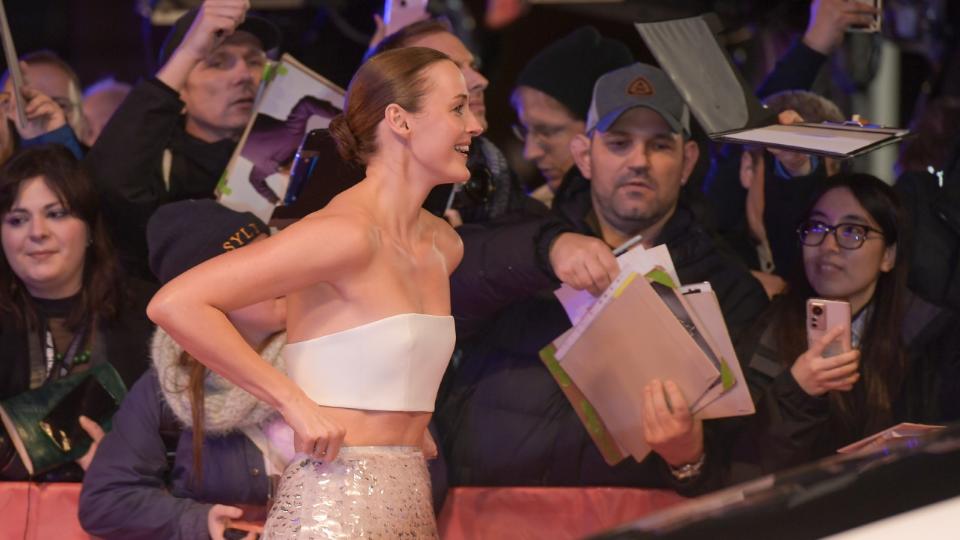
Are you finding a big difference in the way of working between Norway and the U.S.?
Not really. It’s more of a different challenge because both of these movies [A Different Man and Another End] were my first two English-speaking movies. So a lot of my focus went into that and I was a bit scared. Not because of the language barrier but in trying to understand the culture and the codes of America, where we shot A Different Man and of Italy for Another End. I’m just starting and I have to practice, but I’m getting used to it and, I think, I’m getting better and better at it.”
What are the biggest differences between how people work in films in Norway compared to the U.S. and to Italy?
The big difference between Norway and America is, in Norway, there is a very flat structure in work. You have everyone just doing everything together. Of course, everyone has their own tasks but it’s not so separated or hierarchical. In America, it’s more separated and more technical and precise, where [the approach] in Norway can be very messy, where you let things happen and its more out of your control. I liked that way of working a lot. But it was interesting to work in a more structured, separated set as well.
The other difference is America is just a lot bigger. You have the same things on set but just more of them.
And then in Italy, the difference was more cultural. In Norway, if you get in a fight or you’re angry with someone you keep it in, and you have this passive-aggressive tone the whole time. But in Italy, they scream at each other, like instantly! They’re super angry and then it’s gone. But that’s very liberating, actually. I loved being in Italy, I really loved it. It’s also very messy. Almost like how they make food. It looks like they are just throwing something together, and you taste it and it’s the best food ever.
These might seem like small things but it makes a big difference because maybe 85 percent of doing a movie is finding out how you are going to work with people, finding what everyone else expects and your own way of working with that. So when you add a different culture on top of that, it makes it even harder.
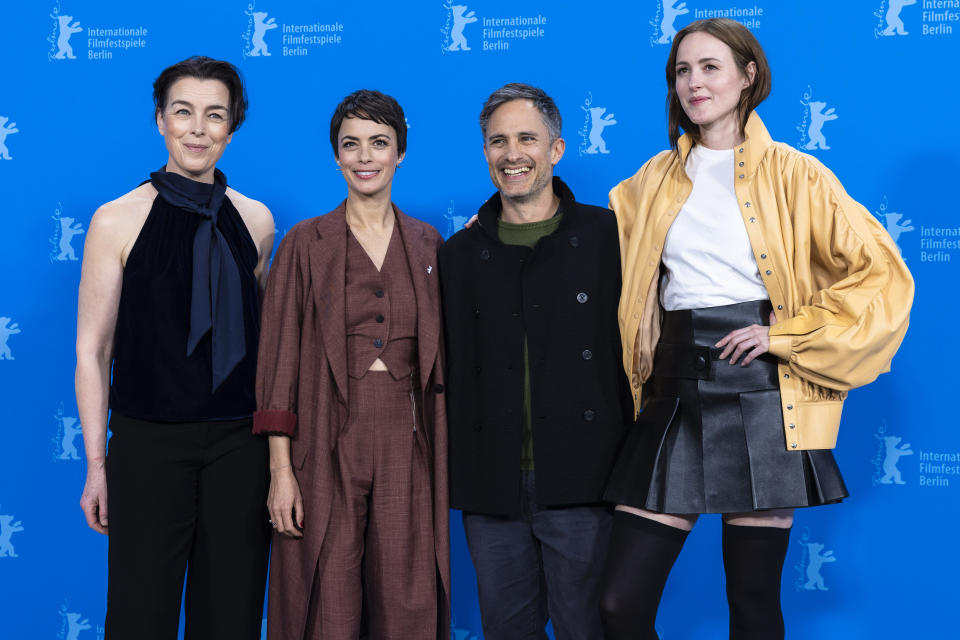
Do you see a link between these two films? On the surface, they both seem to have something to do with identity. A Different Man is about an aspiring actor (Sebastian Stan) afflicted with neurofibromatosis who is cured, literally given a new face, only to find the change triggers a personal identity crisis. Another End imagines a future where people can have the memories of their dead loved ones implanted in a new person. Your character, Ava/Zoe, seems to be a dual personality, caught between the person she was and the identity of the dead woman whose memories she now carries.
I didn’t think about that but it’s a good point. They are a bit similar in their themes and in how they handle things in a weird, atmospheric way. For me, deciding to do the two films more came from a love of these kinds of movies that are very dark and light at the same time, and also ask a lot of questions, but do so in a way that surprises you. Like the films of Charlie Kaufman or David Lynch or Lars von Trier. Films when you read the scripts you think: “Am I reading this right? This is so strange, but it resonates.” The questions in A Different Man resonated with me, and then I met Aaron and he felt so whimsical and free, but also had a very specific way he wanted to make the movie.
After The Worst Person in the World, I was offered a lot of romantic comedies and while I appreciate the genre, I wanted to do work that goes into something deeper, existential, that challenges how we live our lives or our identities. Otherwise, I wouldn’t know how to do it, and I wouldn’t know how to talk about it afterward. So I ended up doing these two movies because they came to me and these were the scripts that talked to me the most.
Do you see a parallel between Ed’s experience after he has his operation and people start treating him differently, and your own, after the success of Worst Person in the World? You went from being publically anonymous to becoming part of celebrity culture.
I don’t know. I didn’t think about that aspect. But Sebastian has talked a lot about it walking around in New York with that mask on [that simulated neurofibromatosis] and how he could really feel a difference in how people responded to him.
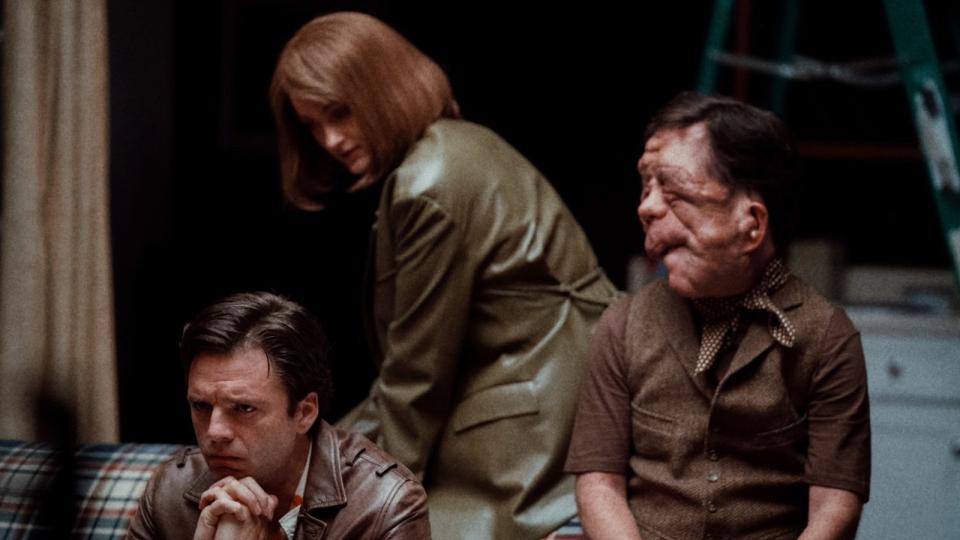
Do you think your character, Ingrid, goes through an identity crisis similar to that of Ed in the film?
Yeah, because my character changes a lot. In the beginning, she kind of a girl next door: Very curious, very open, very kind. Then she begins to start to take Sebastian’s story and make her her own, becoming obsessed with it, in telling his story. She becomes a little distorted and loses herself a little bit. The empathy gets removed a bit and she becomes borderline sociopathic. She has a sort of subconscious battle between letting herself feel what she feels about Edward — she’s very interested in him, likes him a lot and they get along so well, I think she falls a little bit in love with him, but won’t let herself go. Because she’s never seen herself as being with someone like that. So when he disappears, she takes his story and makes it her own. When she sees Oswald [Pearson] for the first time, he fits into her project and is like a second chance. And he’s so free and has much self-esteem and confidence, she kind of lets herself be who she is. On a subconscious level, that is what the Edward character should do. That’s probably the core of the story: Celebrate yourself, no matter what. Be confident and be your weirdest self.
How was it to act across from Stan and Pearson?
With Adam, he’s also like a European actor so we had a lot of banter back and forth and we had a lot of text to learn, so we had a different chemistry than between me and Sebastian. But I don’t really know how to answer that question because, for me, its more about the situation, about how the character changes than about differences in acting between the two. I really see it from the characters’ perspective, which is very different between Edward and Oswald.
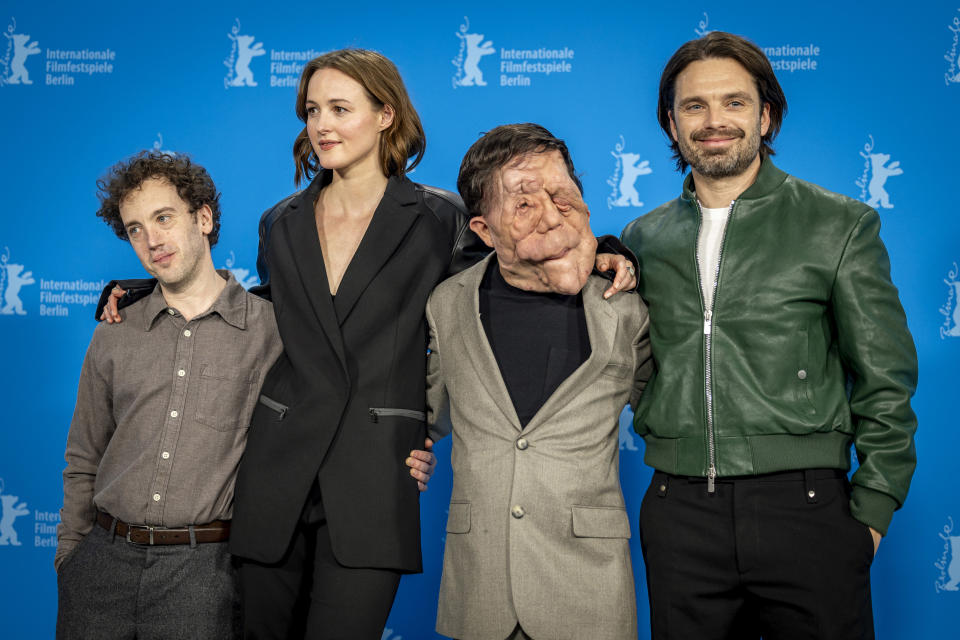
If A Different Man is a bit of a fairy tale, Another End is high-concept science fiction, with a central technology, that allows people to have the memories of their loved ones transferred to a living person. If such a service existed, would you be tempted?
I wouldn’t do it. I think in our society now, it’s so easy to hide behind technology and hide behind everything else, to not be close to someone and not go through your emotions. We already struggle to go through emotions [of grief] because they are so painful. You can see it with the epidemic of painkillers and drugs in America too. It’s so easy to not be present in your body, and not feel the pain. But that’s the universal struggle and the only way is through. I think Ava [in Another End] is the only person in the movie who chooses to be in her grief, even though it’s painful and even though she lives a very destructive life. She is in her grief so, for me, she’s the most hopeful character in that in that story.
How did you approach the role? You’re playing someone with a particular backstory who gets the memories of someone else implanted in her. How did you bring the two characters of Ava and Zoe together in one performance?
That, on a meta-level, is what the movie is about. For me as an actor, it was about how to build two characters at the same time, looking at what makes them different. Is it something in their bodies? It it something in their thought patterns or behaviors, in their state of mind? We were testing out different aesthetics for my appearance, but for me, I felt it would be obvious that Ava’s different thoughts and her different situation would lead her to move her body differently, almost the opposite of Zoe, who represents life and joy. I also loved this, very Italian, dual image of the Madonna and the whore, this very clear pathos in the film. But it was hard to do. And I didn’t have much time. I had maybe three weeks. So I had to get it defined very quickly. But it was a lot of fun, going from one to the other, Ava to Zoe, and seeing the difference.
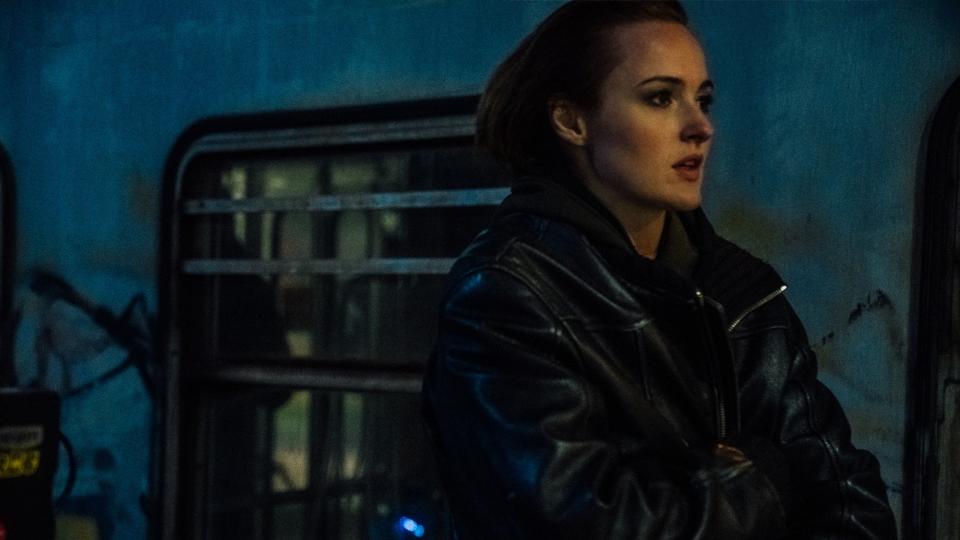
What were the differences, physically, in your performance?
Zoe has a higher voice and Ava a deeper voice. Ava, who is carrying this grief, has become so heavy, so her eyes are heavy. She smiles less and when she smiles, it’s in a sad way. Zoe is a lot more alive, she’s very happy and hopeful, looking out into her environment for life and experience. In the end, it was a very physical thing. And it had a real impact on me. I had the feeling after every Ava take that I needed a cigarette. After Zoe, I didn’t want to smoke.
Do you think of yourself as more of an intellectual actor or a physical one, or are the two inseparable from one another?
For me first come the thoughts and the analysis: What does this script mean? What does it need? What does the movie need? Then: What links all these scenes together? I do a very thorough analysis of the whole thing, which I love doing, and then it all goes into the body. Little by little, I test things out and see how this or that aspect can be translated into my body, into movements. Until I’m like: “There she is.” I guess it comes from working in theater. I’ve actually worked as an actor for 27 years and that’s how I’ve always done it and I’ve never stopped loving the process.
Do you write out a diary of your characters, their backstory, that sort of thing?
I never write anything. It’s all in my head. But it’s almost written in my head, this analysis in the script, and then I forget everything and I just put it in my body. I studied a lot of Meisner technique when I was young. And then I was taught by a descendant of a teacher of Stanislavski. So I have very much have both techniques to draw on.
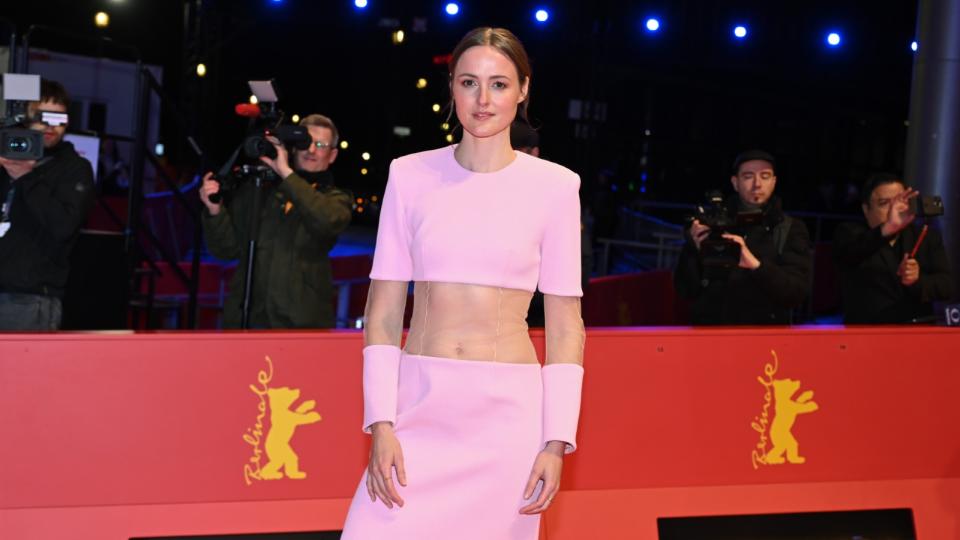
But you don’t go full method, staying in character the whole time on set?
No, just when the camera is going. Otherwise, it’s resting in between.
You have several projects announced, both Norwegian and international. What will you be doing next?
I’m doing another film with Joachim Trier [Sentimental Value] that I’m really looking forward to, that we’re going to shoot in the fall. It’s hard to know where things are going, because, as an actor, you kind of have to choose from what you get offered, you don’t get to create by yourself. I just really hope I can keep working on projects that really mean something, where afterwards you can have good conversations about them, projects that really ask questions. And I hope I can keep working with really great people. That’s my dream. We’ll see how it goes.
Best of The Hollywood Reporter

